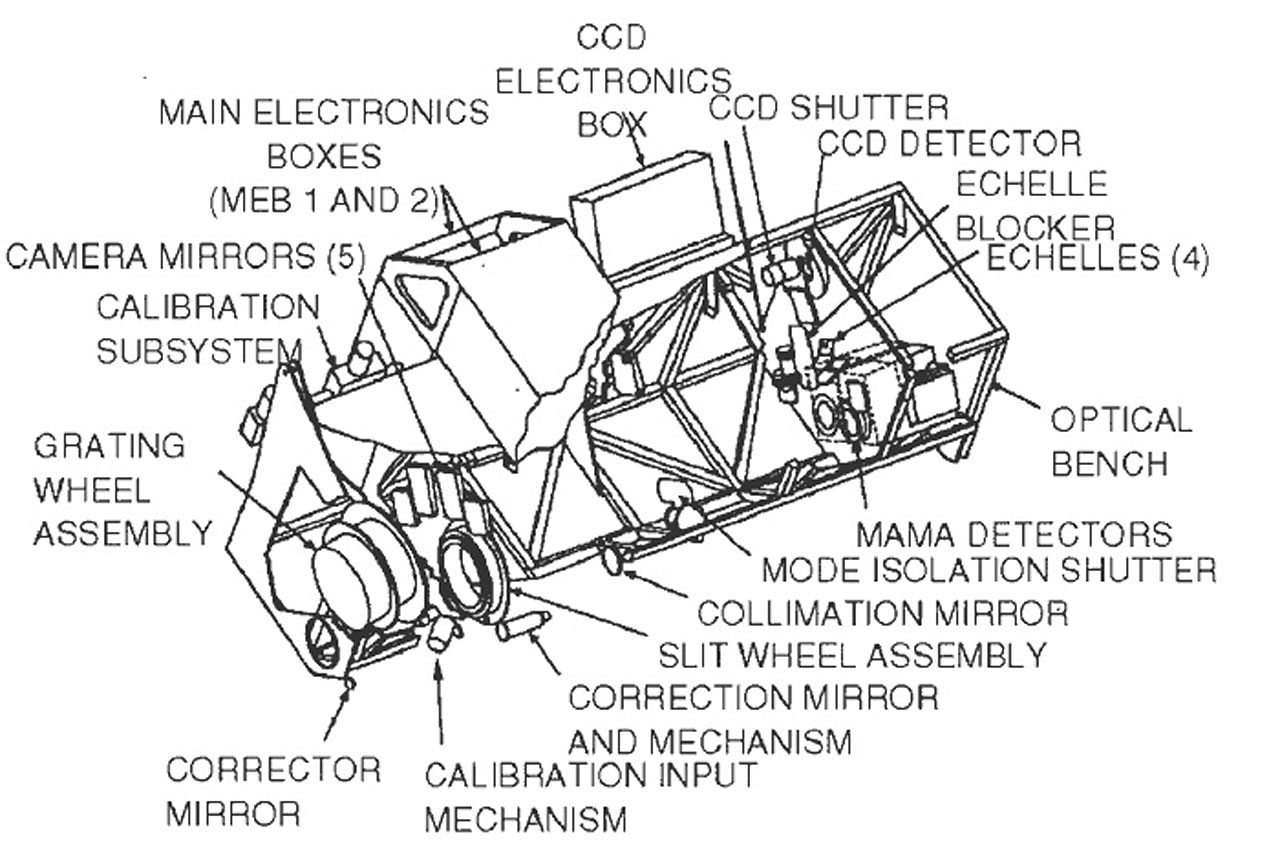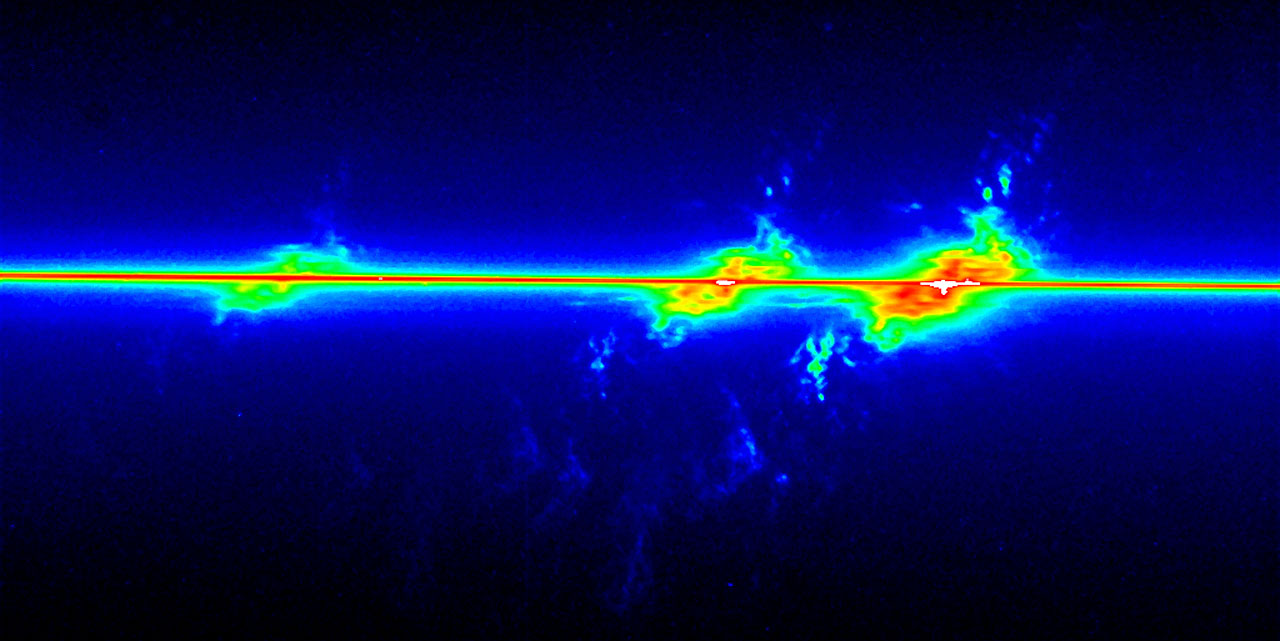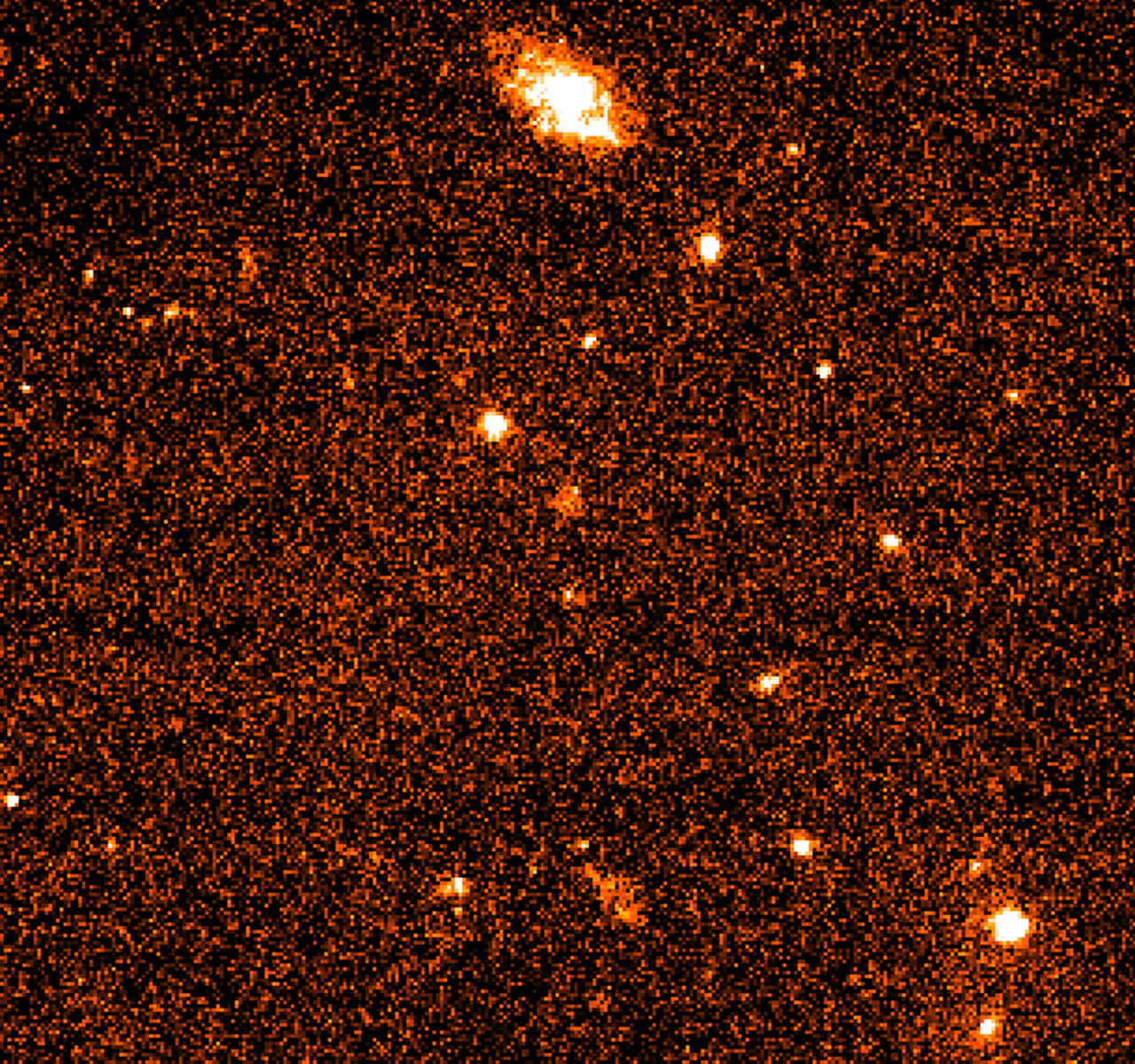Hubble's Instruments: STIS - Space Telescope Imaging Spectrograph
The Space Telescope Imaging Spectrograph (STIS) is a versatile "combi-instrument" taking advantage of modern technologies. It combines a camera with a spectrograph, and covers a wide range of wavelengths from the near-infrared region into the ultraviolet.
A spectrograph spreads out the light gathered by a telescope so that it can be analysed to determine such properties of celestial objects as chemical composition and abundances, temperature, radial velocity, rotational velocity, and magnetic fields. Its spectrograph can be switched between two different modes of usage:
- So-called "long slit spectroscopy" where spectra of many different points across an object are obtained simultaneously.
- So-called "echelle spectroscopy" where the spectrum of one object is spread over the detector giving better wavelength resolution in a single exposure.
STIS also has a so-called coronograph which can block light from bright objects, and in this way enables investigations of nearby fainter objects.
STIS Facts |
|
| Instrument type | Camera and Spectrograph |
| Weight | 318 kg |
| Dimensions | 2.2 x 0.9 x 0.9 m |
| Field of view | MAMA - 25 x 25 arcseconds CCD - 50 x 50 arcseconds |
| Wavelength range | 115 to 1000 nm |


